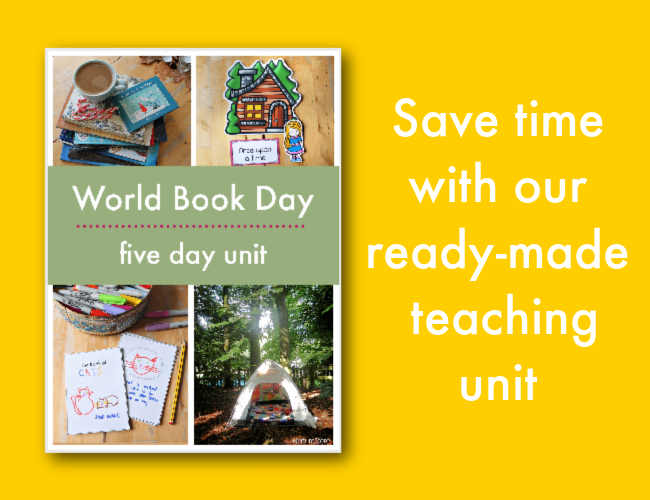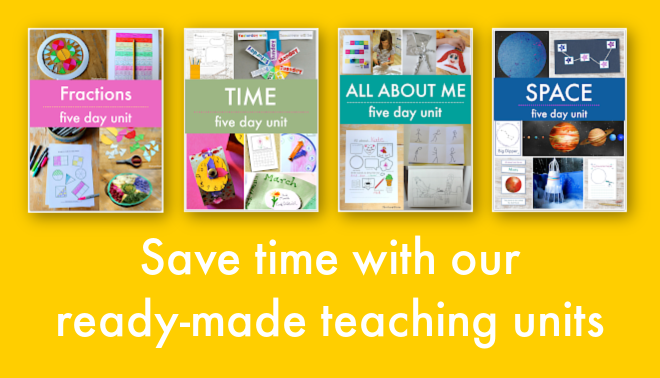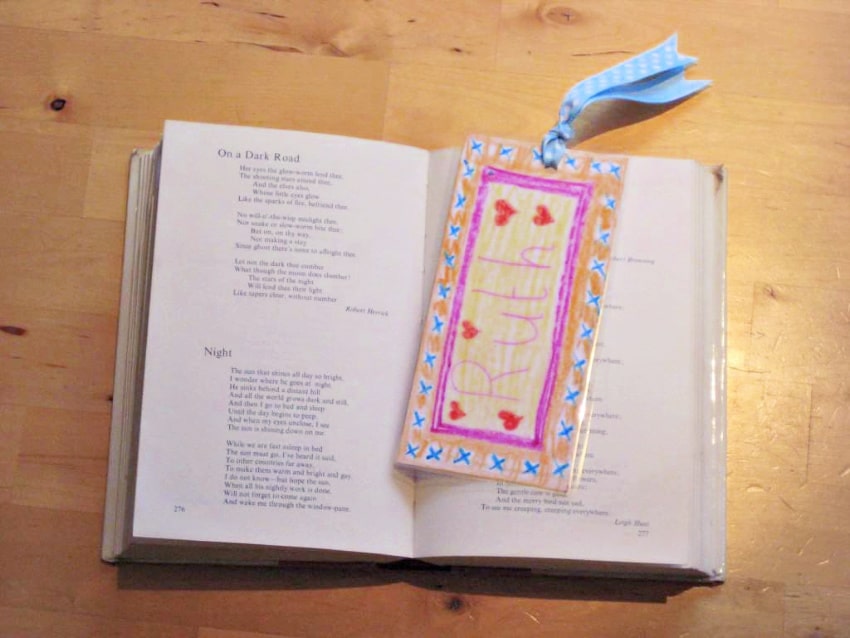Here’s a guide to running a children’s book club and a set of printable book club discussion questions for any book.
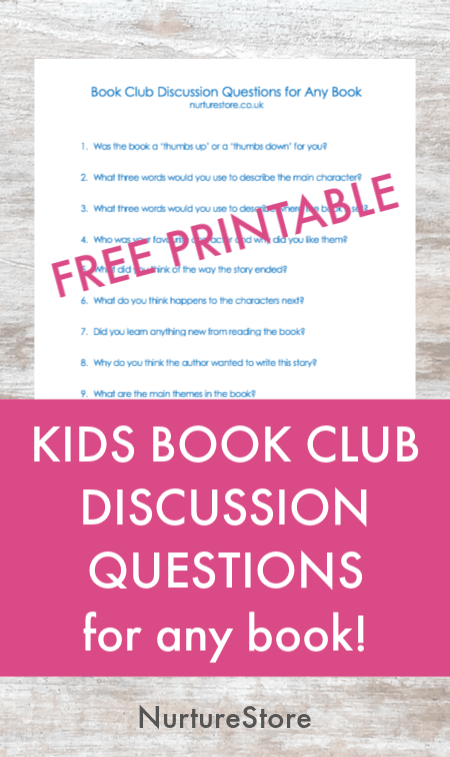
You can use these ideas for easy World Book Day activities to share the love of reading right across the curriculum.
Save time with our ready-made World Book Day teaching unit
For the best World Book Day lesson ideas, save time and get our ready-made World Book Day teaching unit from our Play Academy. You’ll get:
- a ready-made World Book Day thematic unit
- bonus printables to make your teaching even easier
- a guide to building a book nook
- a story writing lesson plans with free story spinner printables
- a non-fiction writing lesson plan
- a story ‘small world’ lesson plan
- a book-themed Guess Who? activity
- book-themed math activities
- a bookmark craft activity with color-in bookmark printables
- a set of book club discussion questions that you can use to talk about any book
- a Goldilocks storytelling kit
- plus over 300 more individual lesson plans in 50 ready-made teaching units so you can easily teach an engaging and successful program that includes math, literacy, science, art, and more, all year round, year after year. Everything is planned for you and easy to find, saving you so much time.
Download your World Book Day Unit here
Come and join our popular Play Academy community and never have to lesson plan again! Join here and download your first ready-made unit today.
Printable book club questions for any book
A book club needs great questions to get the discussion started.
We can also use our questions to help children consider aspects of the book they might not have thought of and to introduce aspects of literary criticism.
Here’s a list of questions you can use with a children’s book club to talk about any book you’re reading. You can print the list too: see the details at the end of this article.
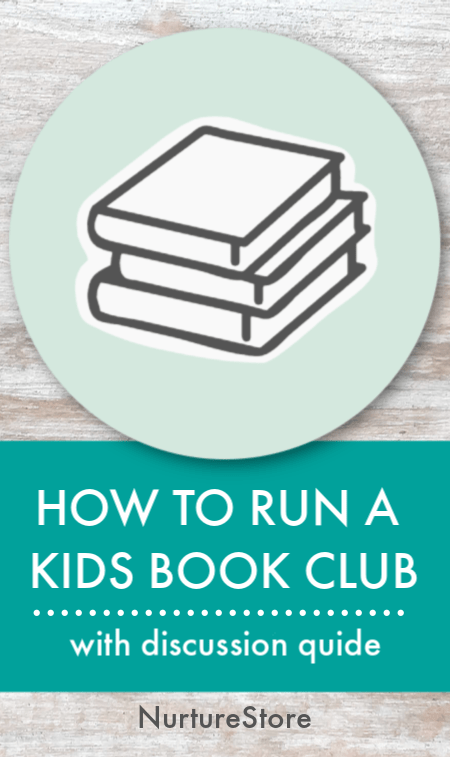
Guide on how to run a children’s book club
Click here to see my guide on how to run a children’s book club.
The best books for a children’s book club
Click here to see my book club’s pick of our Top Ten Books for book clubs.
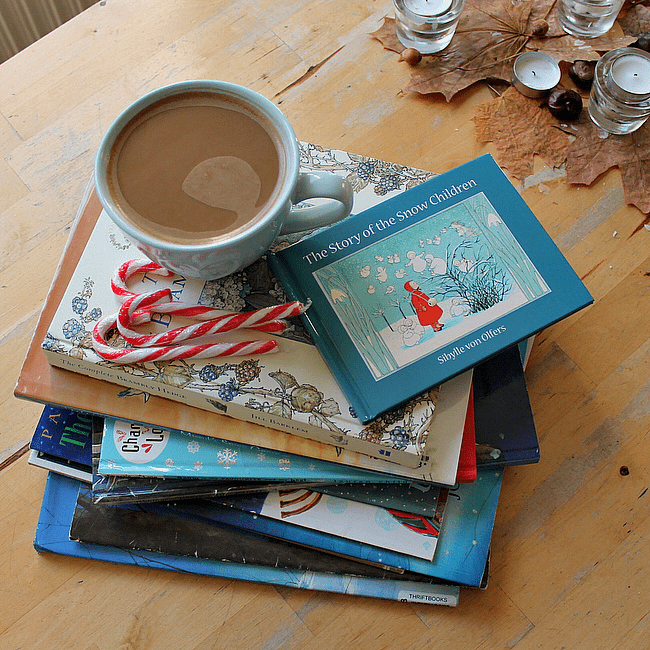
Printable book club discussion questions for any book
Here are ten questions you can use to discuss a book with children. You can use these questions for any book you are reading.
The questions begin with simple conversation starters that everyone can answer and also include more stretching questions to develop your discussion of books.
You can print a copy of these questions: see the details of how to do that at the bottom of this article.
1. Was the book a ‘thumbs up’ or a ‘thumbs down’ for you?
We always open my tween/ young teen book club with a thumbs up / thumbs down show of hands. It’s a light hearted way to get a quick idea of how popular the book was and the children have fun angling their thumbs if they want to give half marks!
2. What three words would you use to describe the main character?
This is a gentle opening question. We work round the group so everyone gets a chance to speak. It gives even our quieter members a way to join the discussion, and there’s no problem if you can only think of two words or someone has picked the words you wanted to say.
3. What three words would you use to describe where the book is set?
This introduces the idea of a book having a setting(s) and might also lead you into mentioning which genre the book is. Have you read any other books with a similar setting? How does this book compare? Is it a very different setting to where you live? Would you like to live in the book’s setting: why / why not?
4. Who was your favourite character and why did you like them?
This develops children’s ability and confidence to share an opinion and back it up with a reason. You might find agreement or disagreement within your group: both are good! We have one book club member who always delights us with picking someone from the story most of us have overlooked.
5. What did you think of the way the story ended?
After all your reading, were you satisfied with the ending? Do you think all the main characters got what they deserved? If not, why not?
6. What do you think happens to the characters next?
This invites your children to extend the storyline themselves. They can use what they’ve understood about the characters and storyline and add their own twist.
7. Did you learn anything new from reading the book?
This question encourages us to always be open to new ideas. Books are wonderful at introducing us to new places and experiences. Perhaps you have learned a new fact about a country or culture different to where you are or perhaps you have understood someone else’s feelings, putting yourself in their shoes.
8. Why do you think the author wanted to write this story?
An interesting question to consider. Did the author want to entertain, or teach, or change people?
9. What are the main themes in the book?
This extends our book discussion into literacy criticism.
A simple way to explain ‘theme’ to children is to say theme means the message that the book shares with us. It’s not the storyline and what happens in the book (which is made up of the characters and the plot), but the meaning, the central message of a book.
Sometimes a theme will be the moral of the story or the lesson the story is trying to share.
Themes can include bravery, adventure, sadness, overcoming challenge, or family conflict.
There can be several different themes in a book. When your children suggest a theme, ask them where in the book we see examples of that theme. Perhaps other members of the group can help think of examples too.
10. Are there any motifs in the book?
A motif is a significant element that appears many times in an artistic work. It might be a distinctive theme, character, image or an idea that occurs again and again in a story, play, piece of music or art.
For example, birds and feathers are a motif in Skellig, light and dark are motifs in Lord of the Rings, a scar is a motif in the Harry Potter series.
Can you think of a motif that appears throughout your book?
Where does the motif appear in the story?
Why do you think the author used this particular motif in this way?
11. Think of your own question to ask about the book.
This is a great way to get your children thinking about the book themselves.
It can highlight the way the book particularly spoke to them, or show you how their book analysis is developing.
It’s also a good way to personalise these general book club questions to talk about things that are specific either to your book or your children.
Save time and get your ready-made World Book Day unit!
Yes, you can do all the planning yourself if you want to, or you can head straight to our Play Academy and download our ready-made World Book Day unit. That sounds like a better idea!
You’ll get a set of lesson plans all based on books: fiction writing, non-fiction writing, making book nooks, book-themed math activities and arts and crafts. Plus you’ll get fun printables to make your teaching even easier.
Come and join the Play Academy to get this and over 50 more ready-made teaching units, so you can easily teach an engaging and successful program that includes math, literacy, science, art, and more, all year round, year after year.
See more and download your first unit here.

How to get our free printables
To download my free printables, you'll need to visit the NurtureStore Printables Library, which is available to all subscribers to my email list, and of course to Play Academy members.
Pop your email address in the form below and you’ll get access to all my free printables, lesson plans, activity ideas, weekly newsletter, and a whole lot more!
After subscribing, be sure to check for the confirmation email. After you confirm your email subscription, we'll send you a welcome email which includes instructions for downloading our free printables.
If you're already subscribed to our email newsletter: check your email for the latest edition of the newsletter where you’ll find a link to access our free printables library - the link is usually at the bottom of the email.
For help accessing our printables, click here.
By subscribing, you consent to our use of your personal data as per our Privacy Policy, which includes agreeing to receiving interest-based email from us.


